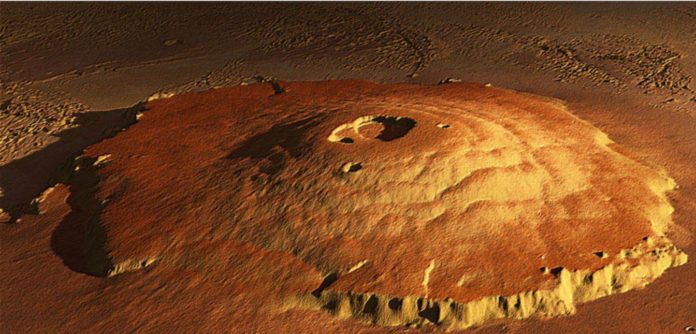Mars again makes it to the top news with new dimension about the life on the planet. Meteors found in Mars make stunning revelations about the volcanic activity in the planet.
Scientists have found several evidences that support the argument that at least 2 billion years of volcanic activity existed in Mars. The largest Martian volcano, Olympus Mons, is about 27.3 kilometers high. This largest volcano of Mars is almost triple the height of Mauna Kea, the Earth’s tallest. The findings published in the journal Science Advances, also confirm that some of the longest lived volcanoes is found on the red-planet.
The detailed analysis of different substances provides information about the age of the meteorite and source of the magma. It also reveals the length of time in space and how long the meteorite was on the Earth’s surface.
The name of the meteorite, currently under study is Northwest Africa 7635. Discovered in 2012, this belongs to a type of volcanic rock called a shergottite. Along with this, eleven other Martian meteors are with similar composition and ejection time. Thus, revealing that they must have possibly evolved from the same location.

Source: UPI.com
Tom Lapen, a professor at University of Houston in U.S., said,”We see that they came from a similar volcanic source. Given that they also have the same ejection time, we can conclude that these come from the same location on Mars”.
Last time, when analysed, their age ranged from 327 million years to 600 million years ago. In contrast, the meteor now found, formed 2.4 billion years ago. Researchers also suggest that ejection from one of the longest-lived volcanic centres in the solar system, formed the Martian meteors.
The research has now paved way for new study on how the planet evolved. It also leads to the history of volcanic activity on Mars.




























